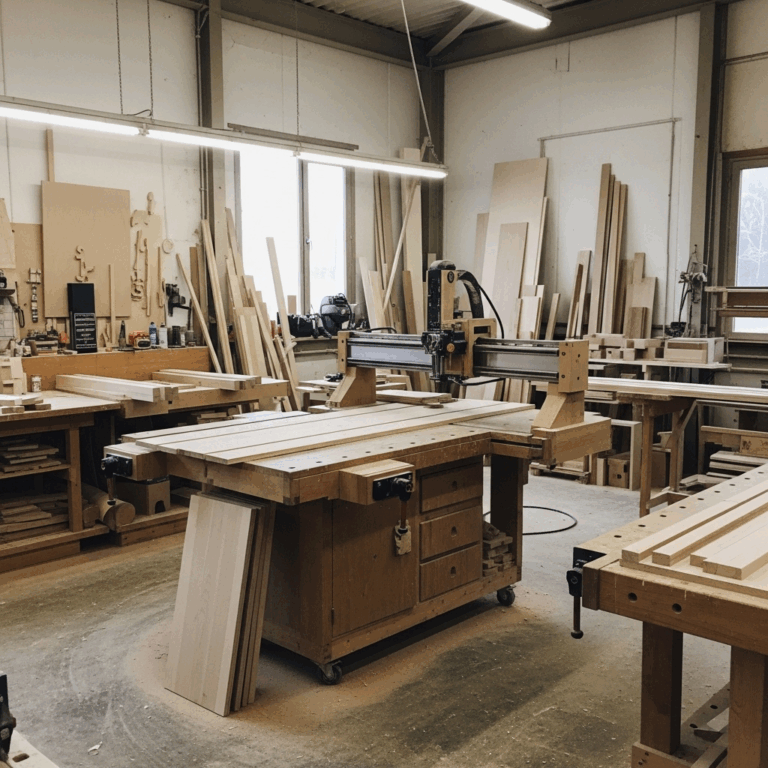Quick Summary: Choose a nailer for strip nails based on project needs and nail type (straight or angled). Electric, cordless, and pneumatic options offer varying power and convenience. Ensure proper safety gear for efficient, secure fastening in DIY and woodworking tasks.
Hey there, DIYers and woodworkers! Jack Shaffer here, your go-to guide for all things nails and tools. Ever stood in the tool aisle, staring at rows of nail guns, feeling a bit lost? You’re not alone! Choosing the right nailer can make a huge difference in your projects, turning frustration into satisfaction. Specifically, when you need to fasten using strip nails – those neat rows of nails held together at an angle or straight – picking the correct nailer speeds things up and ensures a clean finish. Let’s dive in and demystify the world of strip nailers so you can grab the perfect one for your next build!
Table of Contents
What Exactly is a Strip Nailer?
A strip nailer, also known as a strip framing nailer or simply a strip nail gun, is a power tool designed to drive nails in a strip. These nails are collated together using plastic, paper, or wire, forming a cohesive strip that fits into the nailer’s magazine. When you pull the trigger, the tool drives one nail at a time, seamlessly feeding the next from the strip. This is incredibly efficient for tasks that require many nails.
Why Use a Strip Nailer?
Think about building a deck, framing a wall, or putting together a large furniture piece. You’ll be driving dozens, if not hundreds, of nails. A strip nailer takes the repetitive and time-consuming work out of hammering. It:
- Increases Speed: Dramatically faster than using a hammer.
- Improves Consistency: Drives nails to a consistent depth, leading to a cleaner look and stronger hold.
- Reduces Fatigue: Less physical strain compared to traditional hammering.
- Enhances Precision: Allows for accurate placement of nails, especially in tight spots.
Types of Strip Nailers
The world of strip nailers is diverse, with options to suit different power preferences, project types, and budgets. The main categories you’ll encounter are pneumatic, corded electric, and cordless (battery-powered).
1. Pneumatic Strip Nailers
These are the workhorses of the professional construction world and are very popular for heavy-duty tasks. They require an air compressor and an air hose to operate.
How They Work:
Compressed air from the compressor powers a piston inside the nailer. When the trigger is pulled, the air pushes the piston, driving the nail into the material. You’ll need to set up your compressor, connect the hose, and manage its presence around your worksite.
Pros:
- Powerful: Generally provide the most driving power, ideal for hardwoods and framing.
- Lightweight: The nailer itself is often lighter than electric or cordless versions because the motor and power source are separate.
- Reliable: Known for durability and consistent performance.
- Cost-Effective (Tool): The nailer tool itself can sometimes be less expensive than its cordless counterparts.
Cons:
- Requires Additional Equipment: You need an air compressor and hose, which add bulk and cost.
- Hose Management: The hose can get in the way and limit your range.
- Noise: Compressors can be quite loud.
- Setup Time: Takes a bit longer to set up and pack away.
Best For:
Framing, sheathing, decking, and any job requiring high power and high volume of nailing. If you already have a compressor or plan on doing a lot of heavy-duty work, pneumatic is a solid choice.
2. Corded Electric Strip Nailers
These nailers plug directly into a wall outlet. They are often a good entry point for DIYers and hobbyists.
How They Work:
An electric motor powers a mechanism (often a solenoid or a spring-loaded system, though less common for strip nailers that require significant force) that drives the nail. For strip nailers, electric models are typically designed for lighter-duty applications or specific types of nails.
Pros:
- No Compressor Needed: Simple plug-and-play operation.
- Consistent Power: As long as you have power, the nailer performs consistently.
- Lighter than Some Battery Models: Can be easier to handle for extended periods.
- Generally More Affordable: Often the most budget-friendly electric option.
Cons:
- Tethered by Cord: The power cord restricts movement and can be a tripping hazard.
- Limited Power: May not be powerful enough for hardwoods or deep fastening into dense materials.
- Requires Outlet Access: You need to be near a power source.
Best For:
Interior trim, molding, subflooring, and lighter DIY projects where corded access is not an issue. They are great for quick jobs around the house.
3. Cordless (Battery-Powered) Strip Nailers
These are the modern marvels of the nailing world, offering the ultimate in portability and convenience. They run on rechargeable battery packs.
How They Work:
Cordless nailers use one of two primary technologies to drive the nail:
- Battery-Powered Motor with Air-Assisted Technology: These use a combination of a motor and a small, internal air cylinder. The motor compresses air, which then powerfully drives the nail upon trigger pull. This offers good power and consistency.
- Battery-Powered Direct Drive: Some simpler cordless models might use a battery to engage a motor that directly drives the nail (often with a spring system). These are usually for lighter-duty tasks.
The most common and powerful cordless strip nailers utilize the air-assisted technology.
Pros:
- Ultimate Portability: No cords or hoses, giving you complete freedom of movement.
- Convenient: Ready to go as soon as the battery is charged.
- Good Power Output: Modern battery nailers are surprisingly powerful and can handle many tasks, including some framing.
- Clean Operation: No gas canisters or air compressors.
Cons:
- Higher Initial Cost: Generally the most expensive option due to battery and motor technology.
- Battery Dependence: You need charged batteries. You might need spares for all-day use.
- Weight: Can be heavier than pneumatic nailers due to the battery and internal mechanism.
- Power Limitations (for some models): While powerful, some might still struggle with the hardest woods or deepest nail penetration compared to high-end pneumatics.
Best For:
Almost any job, from trim work to framing, especially if you value mobility. They are a fantastic choice for DIYers and professionals who move around a job site frequently.
Understanding Nail Types for Strip Nailers
Not all strip nails are created equal! The type of nail your nailer uses is determined by its collation angle and size. The angle is crucial because it dictates the angle of the magazine on the nailer itself.
1. Straight Strip Nails (0-Degree Strip)
These nails are arranged in a perfectly straight line. The nailer magazine will also be designed to hold and feed these nails at a 0-degree angle.
Common Uses:
- Attaching furring strips.
- Some types of siding installation.
- General construction tasks where nails need to be driven straight in.</li
2. Angled Strip Nails (e.g., 15-Degree, 21-Degree, 28-Degree, 30-Degree, 34-Degree)
Angled nails are collated at an angle, with the most common angles being 15, 21, 28, 30, and 34 degrees. The corresponding nailer will have a magazine angled to match.
Why Use Angled Strip Nails?
Angled nails are very popular for several reasons:
- Access to Tight Spaces: The angle allows you to get the nailer head into corners or against studs that would be difficult to reach with a straight nailer.
- Greater Holding Power: When driving into studs, the angled nails can penetrate the wood at an angle, offering better resistance to pull-out.
- Reduced Risk of Splitting: The slight angle can sometimes reduce the chance of splitting the wood compared to a perfectly straight drive.
Common Uses for Angled Nails:
- Framing: 21-degree, 28-degree, and 30-degree are overwhelmingly used for building walls, floors, and roofs. They are excellent for toenailing (driving nails at an angle to secure pieces together).
- Sheathing: Attaching plywood or OSB to framing.
- Decking: Nailing deck boards to joists.
- Fencing: Assembling fence sections.
Important Note on Collation Type:
Besides the angle, nails are also collated with different materials. You’ll find:
- Plastic Collated: Very common, nails point is usually on a plastic strip. The plastic fragments are often designed to break away and fall out.
- Paper Collated: Nails are typically adhered to paper strips. The paper disintegrates or peels away. These are very common for framing nailers and can be driven flush without popping the paper.
- Wire Collated: Less common for general purpose strip nailers, often found in specialized industrial applications.
Crucially, your nailer is designed for a specific collation angle and type. Using the wrong type of nail will cause jams, damage the tool, or prevent it from feeding properly. Always check your nailer’s manual!
Choosing the Right Strip Nailer for Your Project
Now that you know the types of nailers and nails, let’s bring it all together. What’s the best nailer for you?
Considerations When Buying:
Ask yourself these questions:
- What kind of projects will I be doing? (e.g., light trim, a deck, a shed, general repairs)
- How often will I use it? (occasional hobbyist vs. frequent DIYer)
- What materials will I be working with? (softwoods, hardwoods, engineered lumber)
- What’s my budget? (consider the nailer, batteries, compressor, hose, and nails)
- How important is portability?
- Do I already own some of the equipment? (e.g., an air compressor)
Nailer Guide by Project Type:
Here’s a quick look at what might be best:
| Project Type | Recommended Nailer Type | Nail Angle & Size | Why? |
|---|---|---|---|
| Interior Trim & Molding | Cordless Brad/Finish Nailer (though sometimes straight strip nailers are used for bulkier trim), Corded Nailer | 16-18 Gauge, Straight or 15-Degree | Small size allows for precise placement. Lighter gauge nails are less likely to split delicate trim. |
| Deck Building | Pneumatic Framing Nailer, Cordless Framing Nailer | 21-Degree or 30-Degree (common for framing), 2.5″ to 3.5″ length | High power for driving into joists. Angled heads access tight spots between deck boards. Bulk nails make quick work of repetitive fastening. |
| Shed/Outbuilding Construction | Pneumatic Framing Nailer, Cordless Framing Nailer | 21-Degree or 30-Degree, 2″ to 3.5″ length | Robust fastening needed for structural integrity. Speed is essential for larger projects. |
| Framing Walls/Floors/Roofs | Pneumatic Framing Nailer, Cordless Framing Nailer | Typically 21-Degree or 28-Degree paper collated, 2″ to 3.5″ length | The standard for construction framing due to power, speed, and durability. Paper collation prevents metal fragments. |
| Furniture Building (Larger Pieces) | Cordless Brad/Finish Nailer, Pneumatic Brad/Finish Nailer | 16-18 Gauge, Straight | Precision, less damage to wood surface, good for internal joinery where aesthetics matter. |
| General Home Repairs & DIY | Cordless or Corded Nailer (depending on task) | Varies; often 16-18 gauge brad/finish or a 15-21 degree framing nailer. | Versatility for various jobs, from fastening baseboards to repairing fences. |
Note: While this table focuses on “strip nails,” it’s important to distinguish between framing nailers (which primarily use strip nails for construction) and brad/finish nailers (which also use collated nails but for finer work). If your project is delicate trim, you might need a brad or finish nailer, not necessarily what’s typically referred to as a “strip framing nailer.” However, many concepts translate.
Essential Accessories and Safety Gear
Using a nailer safely and effectively means having the right accessories and, most importantly, protective gear. Never compromise on these!
Safety First!
This is non-negotiable. Always wear:
- Safety Glasses: Essential to protect your eyes from flying debris or ricocheting nails. Look for ANSI Z87.1 compliance.
- Hearing Protection: Nail guns are loud! Earplugs or earmuffs will prevent long-term hearing damage.
- Gloves: Protect your hands from splinters, sharp edges, and minor impacts.
- Work Boots: For foot protection on job sites.
Other Essential Accessories:
- Nails: The correct size, type, and collation angle as specified by your nailer’s manufacturer.
- Air Compressor (for Pneumatic): Choose one with sufficient CFM (Cubic Feet per Minute) output to keep up with your nailer.
- Air Hose (for Pneumatic): A decent quality hose that can handle the required pressure.
- Air Fittings & Couplers: To connect the hose to the compressor and nailer securely.
- Air Tool Oil (for Pneumatic): Many pneumatic tools require a few drops of oil before each use to keep them lubricated. Check your manual!
- Batteries & Charger (for Cordless): Ensure you have enough power for your workday.
- Carrying Case: To protect your tool and keep everything organized.
How to Use a Strip Nailer Safely and Effectively
Let’s get hands-on! Here’s a basic guide to operating your strip nailer.
Step-by-Step Guide:
- Read the Manual: Seriously! Every nailer is a little different. This is the most important first step.
- Inspect Your Nailer: Check for any damage, loose parts, or debris in the magazine. Ensure the firing nose is clean.
- Put on Safety Gear: Glasses, hearing protection, gloves – the whole nine yards.
- Load Nails:
- For pneumatic: Ensure the air pressure is off/disconnected.
- Open the magazine according to your tool’s design.
- Insert the strip of nails, ensuring they are seated correctly against the feed mechanism.
- Close the magazine securely.
- Connect Power:
- Pneumatic: Connect the air hose to the nailer. Turn on the air compressor and adjust it to the pressure recommended by the nailer manufacturer (usually found on the tool or in the manual, typically 70-120 PSI).
- Corded Electric: Plug into a suitable power outlet.
- Cordless: Ensure a charged battery is properly inserted.
- Test Fire (Safely):
- Find a piece of scrap wood.
- Hold the nailer firmly with the nose against the scrap wood.




